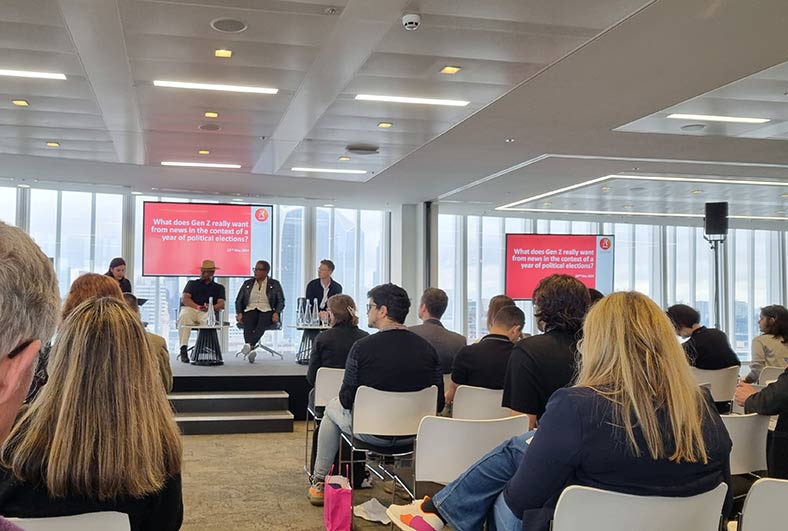Blog / Events / Journalists
Key takeaways from Newsrewired 2024

How do you stand out as a journalist or a media outlet in 2024? This year’s Journalism.co.uk Newsrewired conference tackled the benefits of newsletters, fact-checking, workplace wellbeing, appealing to Gen Z, public interest news, and much more. Here are key tips and takeaways to help you thrive in this ever-changing media landscape.
The personal touch
Readers increasingly want a personal touch in their news and for journalists to show an understanding of their lives. Dmitry Shishkin, CEO at Ringier Media, said in his keynote speech that it’s important for publishers to ‘find more of a human connection in journalism’.
This is a key feature of newsletters, and is a big reason for their rise in popularity. The Telegraph’s head of newsletters Maire Bonheim and The Time’s newsletters editor Henry Bird extolled the virtues of newsletter Q+As to keep readers engaged and make them feel part of the process.
Personality is also important in newsletters. Maire spoke about the success of Camila Tominey’s Royal Appointment Newsletter:
‘Camilla’s writing is very sassy and honest. She includes pictures of herself at Buckingham Palace garden parties and other events, and that’s incredibly popular because it’s her’.
Jem Collins, director of JournoResources, sends a weekly newsletter with job listings in the media. ‘We want our newsletter to feel humorous and personal,’ she said, sharing that a more conversational tone of voice means more replies and feedback from audiences.
AI is here to help
Many in the media are fearful that the rise of AI and Language Learning Models (LLMs) could mean job losses in the industry, but a message of this year’s conference was that AI is here to help.
One of the most beneficial ways: improving fact-checking processes and helping to identify misinformation. Bellingcat social media editor Charlotte Maher highlighted GitHub as a resource ‘full of open source, easy to access tools created by journalists. These include slice guard, which detects problematic data, and InVID, which we use to look at manipulation in imagery’.
There are also tools out there to help with the content creation process – freelancer Sophie Smith Galer spoke about the AI tool she developed, Sophina, which helps write viral video scripts.
At Newsquest, head of editorial AI Jody Doherty-Cove has helped to build an in-house tool that aids in drafting articles based on trusted information from verified sources. This is helping to alleviate pressure on reporters, and give them more time to focus on getting out there to break news or cover court stories.
Co-founder of flare data Daniel Flatt has developed a tool to detect trends and anomalies in data to help journalists, researchers, and publishers pinpoint potential user needs and potential trends.
These tools and more show AI’s potential as an assistant for the media industry going forward – an ally, rather than an enemy.
Appealing to Gen Z
The Reuters Digital News Report shows that 18-25s, or Gen Z, are switching off from the news – whether that be in print or broadcast. When it comes to political journalism, they are even less likely to be engaged. Wale Lawal, founder of The Republic, considered this before covering the election in Nigeria, as there were a lot of first time voters:
‘A lot of people within this younger audience today are issue-led and issue-driven – many of these issues are universal. They care about LGBTQ rights, women’s rights, young people’s rights in general, and climate change.’
5 News editor Debbie Ramsay has overseen sustained growth in the 16-34 audience category for the channel – one of the only broadcasters to achieve this. What’s the secret?
‘Explainers work well. Saying what’s relevant to me and why does it matter? It’s about getting down to the basics, so people know how the news affects their everyday lives,’ said Debbie.
Explainers, solutions journalism, and positive news are all more likely to appeal to that Gen Z audience, but the issues and topics you write about will make a big difference, too.
Need to get information or an expert to feature in your newsletter? The Journalist Enquiry Service can help you find what you need. All you have to do is fill in the form here.

